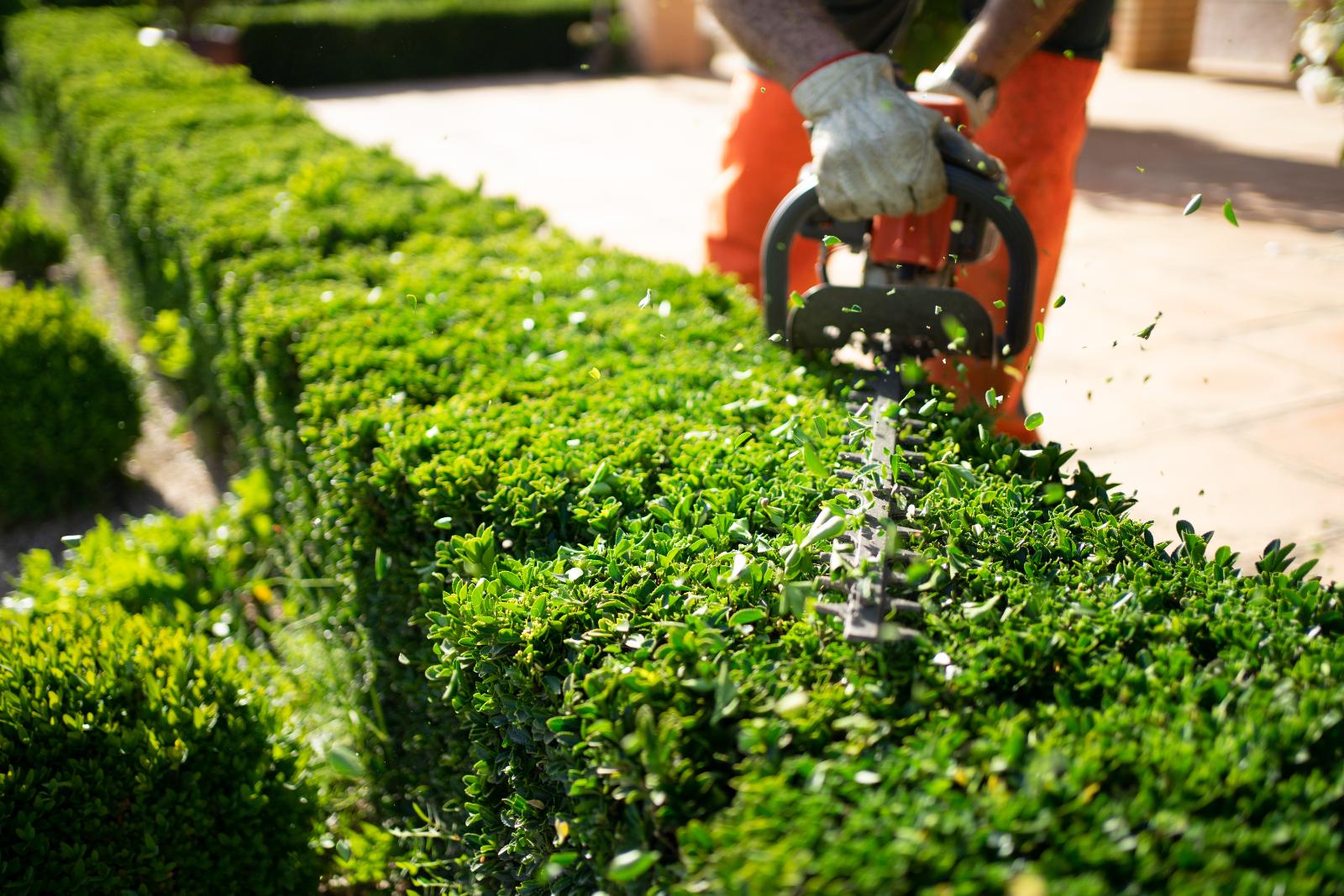Contents
You might think that generously watering your lawn in the spring is essential for its health, but have you considered the long-term impact of excessive water usage? Conserving water during spring lawn care benefits the environment and plays a significant role in maintaining a lush and vibrant lawn. Understanding the importance of water conservation in your spring lawn care routine can make a positive difference while achieving a beautiful outdoor space.
Key Takeaways
- Preserve essential resources and promote sustainable practices.
- Reduces reliance on tap water and overall water usage.
- Efficient irrigation techniques save water and optimize usage.
- Maximizing soil moisture promotes healthy root development.
- Choosing drought-resistant grass reduces water needs and supports a green lawn.
Benefits of Water Conservation
Water conservation offers numerous benefits, including preserving essential resources and promoting sustainable practices. One effective method to conserve water is by using a rain barrel. Rain barrels collect and store rainwater that can be used for various purposes, reducing the need for tap water and lowering overall water usage. By incorporating rain barrels into your lawn care routine, you can greatly decrease your reliance on freshwater sources for activities like watering plants or washing outdoor surfaces.
Monitoring your water usage is essential in understanding where improvements can be made. By tracking how much water you use for tasks like irrigation or cleaning, you can identify areas where conservation efforts can be implemented. This analytical approach allows you to make informed decisions about your water consumption and find ways to reduce waste effectively.
Incorporating rain barrels and being mindful of your water usage are vital steps in promoting water conservation, preserving resources for future generations, and fostering a sustainable environment.
Efficient Irrigation Techniques
To optimize water usage in your lawn care routine, consider employing smart sprinkler systems that adjust watering schedules based on weather conditions and soil moisture levels.
Additionally, implementing drip irrigation methods can target specific areas with precision, reducing water waste and promoting healthier plant growth.
Smart Sprinkler Systems
Implementing advanced smart sprinkler systems can greatly enhance the efficiency of your lawn irrigation techniques. These systems utilize water-saving technology and automated irrigation processes to optimize water usage based on real-time weather data and soil moisture levels. By incorporating features like soil sensors and weather forecasting, smart sprinkler systems ensure that your lawn receives the right amount of water at the right time, preventing overwatering and water wastage.
Additionally, these systems can be remotely controlled through smartphone apps, allowing you to adjust watering schedules conveniently. Investing in a smart sprinkler system promotes water conservation and helps you maintain a healthy, lush lawn without the guesswork of traditional irrigation methods.
Drip Irrigation Methods
Enhancing your lawn irrigation efficiency can be achieved through utilizing drip irrigation methods, a notably water-saving technique. Drip irrigation is a water-saving technology that delivers water directly to the roots of plants, reducing evaporation and runoff.
This eco-friendly solution promotes sustainable practices and conservation strategies by efficiently using water resources. The system consists of tubes or pipes that distribute water slowly and precisely to targeted areas, ensuring plants receive the right amount of water without wastage.
Drip irrigation saves water and promotes healthier plant growth by preventing water from splashing onto leaves, reducing the risk of diseases. Implementing drip irrigation methods can considerably contribute to a greener lawn while conserving water resources for a more sustainable environment.
Importance of Soil Moisture
Maintaining proper soil moisture levels is essential for a healthy lawn. Understanding the benefits of adequate soil moisture, along with tips on watering frequency, can help you optimize your lawn care routine.
Ensuring the right moisture levels also promotes robust plant root systems, supporting overall plant health and vitality.
Soil Moisture Benefits
Maximizing soil moisture content is essential for promoting healthy root development and overall plant growth in your lawn. Adequate soil moisture is pivotal for maintaining soil health by providing plants with the necessary hydration for best growth.
When soil moisture levels are insufficient, it can lead to stressed plants, reduced nutrient uptake, and disease susceptibility. Proper soil moisture also helps in ensuring efficient water usage and reduces the need for excessive irrigation, contributing to water conservation efforts.
Watering Frequency Tips
Understanding the appropriate watering frequency is essential to optimizing the health of your lawn, especially in relation to maintaining soil moisture levels. Watering depth and timing are critical factors in ensuring proper lawn hydration and growth.
When watering your lawn, it’s important to water deeply but infrequently. This encourages the roots to grow deeper into the soil, promoting a healthier and more drought-resistant lawn. Timing also plays an important role; watering in the early morning allows the grass blades to dry during the day, reducing the risk of diseases.
Plant Root Health
Proper soil moisture management is essential for fostering healthy plant root systems. Plant hydration, a pivotal aspect of root development, relies heavily on adequate soil moisture levels. Insufficient water in the soil can lead to wilting and stunted root growth, impacting the overall health of your plants.
Conversely, excess water can deprive roots of oxygen, causing root rot and other diseases. Maintaining a balanced soil moisture level ensures excellent plant root health. Regularly check the soil moisture content using a meter or simply feeling the soil.
Adjust your watering schedule accordingly, providing enough moisture to support plant hydration without saturating the soil. By prioritizing soil moisture management, you can promote robust root development and cultivate thriving plants.
Choosing Drought-Resistant Grass
When selecting grass for your lawn that can withstand periods of limited water availability, consider the drought-resistance ratings of different grass species. Opt for warm-season grasses like Bermuda grass, Zoysia grass, or Buffalo grass, as they have natural drought tolerance and can survive with less water compared to cool-season grasses.
Bermuda grass, for instance, is known for its deep root system, enabling it to access water from lower soil levels during dry periods. Zoysia grass has a dense growth pattern, reducing water evaporation from the soil. Buffalo grass is a low-maintenance option with good drought tolerance once established.
Additionally, consider fine fescue grass varieties like creeping red fescue or hard fescue. These cool-season grasses are moderately drought-resistant. Their fine blades form dense mats, reducing water loss through evaporation.
Proper maintenance practices such as regular mowing at the correct height, adequate fertilization, and soil aeration can further enhance the drought resistance of your chosen grass species. By selecting drought-resistant grass and implementing water-saving landscaping techniques, you can maintain a healthy lawn while conserving water resources effectively.
Rainwater Harvesting Solutions
Implement rainwater harvesting solutions to effectively collect and utilize natural precipitation for lawn care. Rainwater harvesting involves collecting and storing rainwater for later use, providing an eco-friendly and cost-effective solution for watering your lawn.
By installing rain barrels or cisterns connected to your rooftop gutters, you can capture runoff that would otherwise be wasted. This collected rainwater can then be used for watering your lawn, reducing your reliance on municipal water sources.
Rooftop gardens can also serve as a form of rainwater harvesting, as they absorb rainwater and prevent excess runoff. Additionally, incorporating green infrastructure such as permeable pavements and rain gardens can help manage stormwater on your property, contributing to water sustainability efforts.
Water recycling systems can further enhance your rainwater harvesting capabilities, allowing you to reuse water for various household and outdoor purposes. By implementing these practices, you can contribute to a more sustainable water management approach for your lawn care needs.
Smart Sprinkler System Usage
Utilize advanced technology, such as smart sprinkler systems, to optimize water usage for your lawn maintenance needs. These systems offer significant advantages in water-saving technology and irrigation efficiency. Here’s how you can benefit:
Customized Watering Schedules: Smart sprinkler systems can be programmed based on factors like soil type, plant type, sun exposure, and weather forecasts, ensuring that your lawn receives the right amount of water at the right time.
Moisture Sensors: These sensors detect the moisture level in the soil, preventing overwatering by adjusting the irrigation cycle accordingly.
Remote Access: Control your sprinkler system from anywhere using a smartphone app, allowing you to make real-time adjustments and avoid water wastage.
Water Usage Monitoring: Smart systems provide data on water consumption, allowing you to track usage patterns and make informed decisions to enhance irrigation efficiency.
Implementing Mulching Strategies
To further enhance your lawn care efforts, consider incorporating mulching strategies as a sustainable and effective method for conserving water and promoting soil health. Mulching benefits your garden beds by aiding in water retention, reducing evaporation, and suppressing weed growth. Different mulching techniques can be applied to suit your specific needs. Here is a table outlining some common mulching materials and their benefits:
| Mulching Material | Benefits |
|---|---|
| Wood Chips | Retains moisture |
| Straw | Insulates soil |
| Leaves | Adds nutrients to the soil |
| Grass Clippings | Suppresses weed growth |
| Newspaper | Biodegradable, weed control |
When mulching garden beds, maintain a layer of 2-4 inches for optimal results. Mulch should be kept a few inches away from plant stems to prevent rotting. By implementing these mulching strategies, you can conserve water, improve soil structure, and create a healthier environment for your plants to thrive.
Monitoring Water Usage Levels
Monitoring water usage levels in your lawn care routine is vital for optimizing irrigation practices and promoting water conservation. By actively tracking and managing how much water your lawn receives, you can ensure that it stays healthy while minimizing wastage.
Here are some key points to ponder:
- Water Usage Monitoring: Use water meters or smart irrigation systems to monitor how much water your lawn uses.
- Conservation Practices: Adjust your watering schedule based on the actual needs of your lawn to avoid overwatering.
- Moisture Levels: Use moisture sensors to gauge the moisture levels in the soil accurately and water only when necessary.
- Watering Schedules: Develop a watering schedule that aligns with the specific requirements of your grass type and the local climate to prevent water runoff and evaporation.
Wrap-Up
You now grasp the critical importance of water conservation for spring lawn care.
You can ensure a healthy and sustainable lawn environment by implementing efficient irrigation techniques, managing soil moisture levels, choosing drought-resistant grass varieties, and utilizing rainwater harvesting solutions.
Make the conscious decision to prioritize water conservation practices to promote resource preservation and reduce overall water usage, ultimately benefiting both your lawn and the environment.




